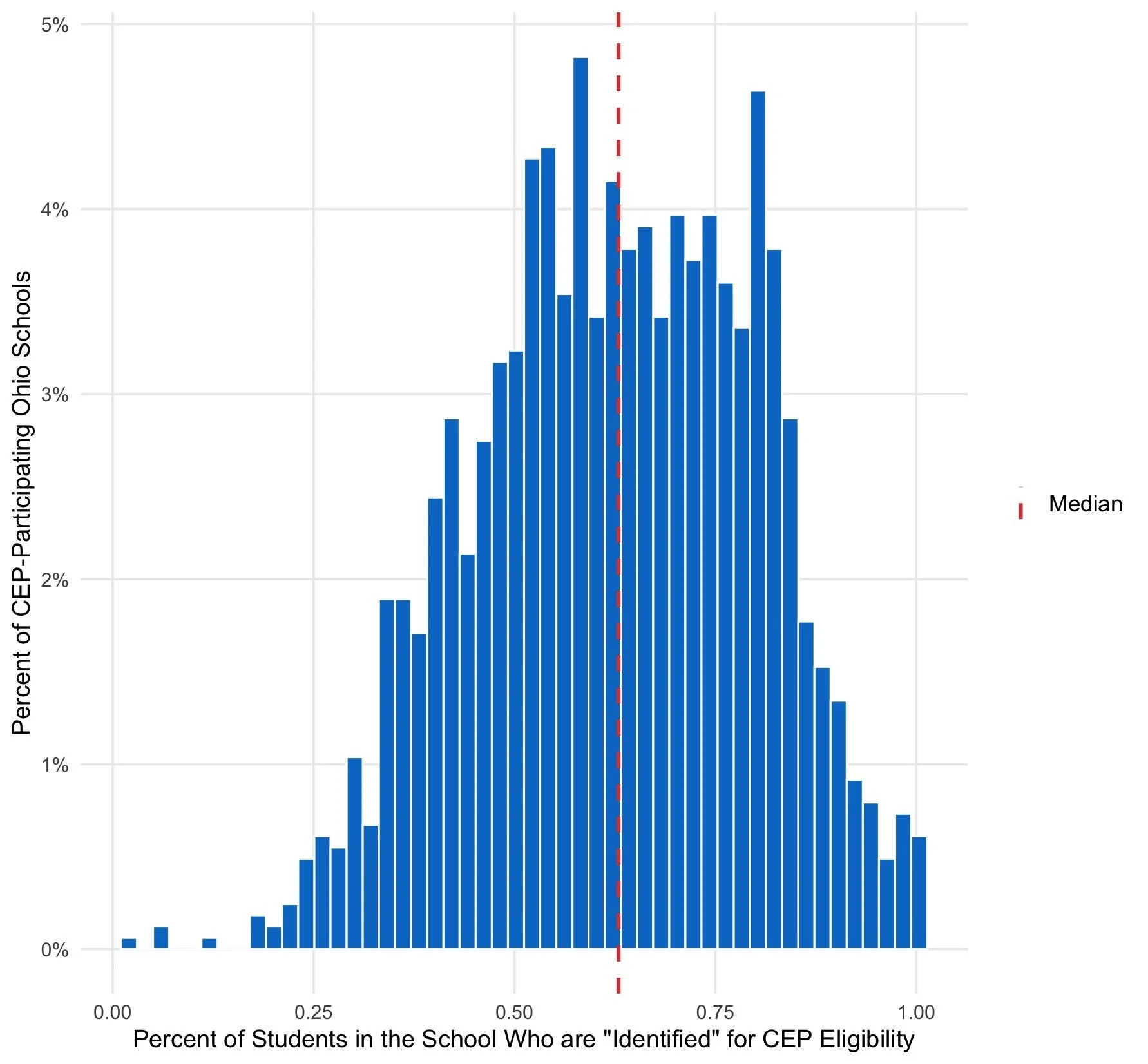In the past decade, a new federal program has reshaped how over 27 million children across the country receive school meals. The Community Eligibility Provision allows schools with a large number of low-income students to serve free meals to all students, as an alternative to the traditional free and reduced-price meal system in the National School Lunch Program and School Breakfast Program. The federal government established the Community Eligibility Provision as part of the Healthy, Hunger-Free Kids Act of 2010, and the program became available nationwide beginning in the 2014-2015 school year.
The Community Eligibility Provision has been a topic of hot debate. Advocates argue that the Community Eligibility Provision makes school meals more accessible and less stigmatizing for students in need, reduces schools’ administrative costs compared to the traditional school meals system, and improves students’ academic and health outcomes. These claims are generally supported by research, although the body of evidence is still relatively small since the Community Eligibility Provision is so new.
Critics, however, contend that the Community Eligibility Provision is an inefficient use of tax dollars, noting that some students in schools that participate in the Community Eligibility Provision come from higher-income families and do not need free meals. The Heritage Foundation’s Project 2025 agenda suggested that Congress should eliminate the Community Eligibility Provision and “restore [the National School Lunch Program] and [School Breakfast Program] to their original goal of providing food to K–12 students who otherwise would not have food to eat while at school.” Earlier this year, federal lawmakers considered reducing eligibility for the Community Eligibility Provision, but as of July 2025, that change has not been implemented.
The number of Ohio students whose schools participate in the Community Eligibility Provision has increased substantially since the program began. In 2015, 19% of Ohio students were in schools that participated in the Community Eligibility Provision. By October 2024, the number had risen to 40%, or 684,000 students across the state. The rise in participation is likely due to a combination of expanded eligibility, new methods for certification, and increased interest in providing free school meals to all students after the USDA temporarily provided universal free school meals nationwide during the Covid-19 pandemic.
Schools can apply for the Community Eligibility Provision individually or as part of a group through a Local Education Agency, such as a school district or charter school organization. For simplicity, I will refer to Local Education Agencies as “districts.” To be eligible to participate in the Community Eligibility Provision, at least 25% of the enrolled students must be “identified” with certain criteria. An “identified student” is any student who is automatically certified to receive free school meals due to household participation in other social safety net programs, such as the Supplemental Nutrition Assistance Program (“food stamps”) or Temporary Assistance for Needy Families. The number of “identified” students may be lower than the total number of students eligible for free meals, since not all eligible families participate in the safety net programs that are used for automatic certification.
Enrolling in the Community Eligibility Provision does not guarantee that a school or district will receive enough federal funding to provide free meals to all students. The federal government reimburses schools for enough meals to serve 1.6 times the “identified student percentage,” meaning the percent of students who meet the automated eligibility criteria described above. Thus, in order to receive federal reimbursement that covers free meals for all students, a school or district’s identified student percentage must be at least 62.5% (since 62.5% x 1.6 = 100%). Multiplying the identified student percentage by 1.6 helps provide coverage for low-income students who are not automatically identified through other safety net programs.
If a school or district’s identified student percentage is less than 62.5%, they may need to supplement with local or state funding to provide free meals to all students. 51% of Ohio schools that participate in the Community Eligibility Provision have an identified student percentage greater than or equal to this threshold, although this statistic does not necessarily indicate whether the schools receive enough federal reimbursement to cover all students, since eligibility and reimbursement rates are often determined at the district level.
The plot below displays the distribution of identified student percentages across Ohio schools that participate in the Community Eligibility Provision. The median identified student percentage across schools is 62.9%. Some schools have identified student percentages lower than the 25% eligibility threshold, because they are enrolled in the Community Eligibility Provision at the district level and have a lower poverty rate than the other schools in their district. For example, the Columbus Gifted Academy has an identified student percentage of only 1.6%, but is enrolled in the Community Eligibility Provision because it is part of the high-poverty Columbus City Schools district. As noted above, the total number of low-income students is typically higher than the number of “identified” students.
Distribution of “Identified Student Percentages” Across Ohio Schools Participating in the Community Eligibility Provision
Plot generated with data from the Ohio Department of Education and Workforce; code available here.
Beyond the Community Eligibility Provision, the State of Ohio has also expanded access to free school meals using state funding. Since 2023, Ohio reimburses schools to provide free meals to students who are federally eligible for reduced-price meals. In the 2025 legislative session, the Ohio Senate considered a bill to expand access to free school meals to all Ohio students, but the bill did not pass. Universal free school meals remain a topic of national conversation, so we may see other changes proposed in the near future.
For more on school meals, see our blog posts on the Community Eligibility Provision, universal free school meals, the history of school meals, and school meals and student achievement.



